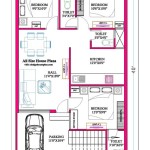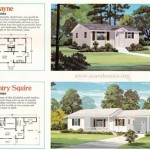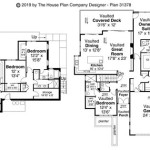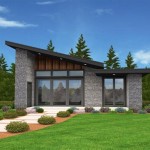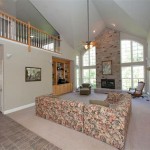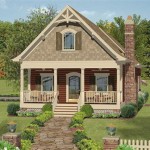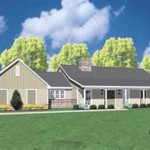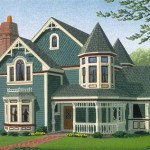Floor Plans For Spanish Style Homes: A Comprehensive Guide
Spanish style homes, known for their distinctive architectural features and timeless elegance, evoke a sense of warmth and Mediterranean charm. Characterized by stucco walls, red tile roofs, arched doorways, and courtyards, these homes require floor plans that complement their aesthetic and functional attributes. Understanding the core principles of Spanish style architecture and how they translate into effective floor plan designs is crucial for homeowners, builders, and architects alike.
The influence of Spanish Colonial, Moorish, and Mediterranean architectural traditions is evident in the designs of Spanish style homes. These influences result in a harmonious blend of indoor and outdoor living spaces, emphasizing natural light, ventilation, and a connection to the surrounding landscape. Floor plans tailored for Spanish style homes prioritize open layouts, strategically placed windows and doors, and the incorporation of traditional elements like courtyards, patios, and wrought-iron details.
Key Features of Spanish Style Home Floor Plans
Several key features define effective floor plans for Spanish style homes. These include a focus on natural light and ventilation, the integration of indoor and outdoor living spaces, and the incorporation of traditional architectural elements. Adherence to these principles is essential for creating a cohesive and functional design that captures the essence of the Spanish style aesthetic.
Natural Light and Ventilation: Spanish style homes thrive on natural light and ventilation. Floor plans should maximize the entry of sunlight while promoting cross-ventilation to maintain a comfortable indoor climate. Large windows, strategically placed skylights, and open doorways are essential components. Courtyards, often located at the center of the house, serve as light wells, bringing natural light into the interior while providing a sheltered outdoor space. High ceilings contribute to air circulation and create a sense of spaciousness.
The orientation of the house is another crucial consideration when maximizing natural light. Ideally, living spaces should face south or east to capture the morning sun, while bedrooms can be located on the east or north side to provide cooler sleeping environments. The position of windows should take into account the prevailing wind direction to facilitate natural cooling. The use of light-colored paint and reflective surfaces further enhances the illumination of interior spaces.
Indoor-Outdoor Living Spaces: One of the defining characteristics of Spanish style homes is the seamless integration of indoor and outdoor living spaces. Floor plans should promote this connection through features like patios, courtyards, and verandas. These outdoor areas serve as extensions of the interior, blurring the lines between inside and outside. Large sliding glass doors or French doors can open onto patios or courtyards, creating a smooth transition between the living room, dining room, or kitchen and the outdoor environment.
Courtyards are often the focal point of Spanish style homes, providing a private outdoor sanctuary. They can be used for dining, lounging, or gardening, and can be enclosed by walls or arcades to create a sense of intimacy and protection from the elements. Patios, located at the front or rear of the house, offer additional outdoor living space and can be furnished with comfortable seating and outdoor kitchens. Verandas, which are covered porches, provide shade and shelter from the sun, allowing residents to enjoy the outdoors even during hot weather.
Traditional Architectural Elements: Spanish style homes incorporate a variety of traditional architectural elements, such as arched doorways, stucco walls, red tile roofs, and wrought-iron details. These elements should be integrated into the floor plan in a cohesive and harmonious manner. Arched doorways create a sense of grandeur and elegance, while stucco walls provide a distinctive textured surface. Red tile roofs are a hallmark of Spanish style architecture, adding a touch of warmth and authenticity. Wrought-iron details, such as window grilles, balconies, and lighting fixtures, add a decorative touch and enhance the overall aesthetic.
Other traditional elements that can be incorporated into Spanish style floor plans include exposed wooden beams, terracotta tile floors, and handcrafted tile accents. These features add character and charm to the home, creating a sense of history and authenticity. Fireplaces, often located in the living room or courtyard, provide warmth and ambiance. The use of natural materials, such as wood, stone, and clay, further enhances the organic feel of the home.
Common Layout Strategies in Spanish Style Homes
Spanish style homes often employ specific layout strategies to maximize space, promote functionality, and enhance the overall aesthetic. These strategies include open floor plans, compartmentalized spaces for privacy, and centralized courtyards.
Open Floor Plans: Open floor plans are a staple of modern Spanish style homes. They combine the living room, dining room, and kitchen into one large, flowing space, creating a sense of spaciousness and connectivity. This layout is ideal for entertaining and allows for easy interaction between family members. The open floor plan can be further enhanced by the use of high ceilings, large windows, and strategically placed furniture to define different zones within the space.
While open floor plans promote connectivity, it's essential to maintain a sense of order and flow within the space. Furniture arrangements can be used to delineate different areas, such as the living room, dining room, and kitchen. The use of area rugs, lighting fixtures, and changes in floor material can also help to define these zones. In addition, it's important to ensure that there is ample storage space to keep the open floor plan clutter-free.
Compartmentalized Spaces: While open floor plans are common, Spanish style homes also incorporate compartmentalized spaces to provide privacy and separation. Bedrooms, bathrooms, and home offices are typically located away from the main living areas to create a sense of tranquility and seclusion. Hallways and corridors can be used to connect these spaces, providing a clear separation between public and private areas.
The design of compartmentalized spaces should be carefully considered to ensure that they are functional and comfortable. Bedrooms should be spacious enough to accommodate a bed, dresser, and other essential furniture. Bathrooms should be well-ventilated and equipped with modern fixtures. Home offices should be quiet and conducive to work. The use of soundproofing materials can further enhance the privacy of these spaces.
Centralized Courtyards: The courtyard is often the heart of a Spanish style home, serving as a central gathering place and a source of natural light and ventilation. Floor plans are often designed around a central courtyard, with rooms arranged around its perimeter. The courtyard can be accessed from various parts of the house, creating a seamless connection between indoor and outdoor spaces. It can be used for dining, lounging, or gardening, and can be enclosed by walls or arcades to create a sense of privacy and protection from the elements.
The design of the courtyard should reflect the overall aesthetic of the home. It can be paved with terracotta tiles, adorned with fountains and sculptures, and planted with lush vegetation. The use of outdoor furniture and lighting can create a comfortable and inviting atmosphere. A well-designed courtyard can significantly enhance the livability and aesthetic appeal of a Spanish style home.
Adaptations for Modern Spanish Style Homes
While traditional Spanish style homes have a timeless appeal, adaptations are often necessary to meet the needs of modern homeowners. These adaptations may include incorporating modern amenities, optimizing energy efficiency, and adapting to smaller lot sizes.
Incorporating Modern Amenities: Modern homeowners expect their homes to be equipped with the latest amenities, such as gourmet kitchens, luxurious bathrooms, and smart home technology. These amenities can be seamlessly integrated into Spanish style homes without compromising their traditional aesthetic. Gourmet kitchens can be designed with modern appliances and countertops while still incorporating traditional elements like handcrafted tile and exposed wooden beams. Luxurious bathrooms can be equipped with modern fixtures and features while maintaining a sense of warmth and elegance through the use of natural materials and soft lighting.
Smart home technology can be discreetly integrated into Spanish style homes to provide enhanced comfort and convenience. Features such as automated lighting, climate control, and security systems can be controlled remotely, allowing homeowners to manage their homes from anywhere in the world. These technologies can be seamlessly integrated into the home's electrical and plumbing systems without detracting from its traditional aesthetic.
Optimizing Energy Efficiency: Energy efficiency is a critical consideration for modern homeowners. Spanish style homes can be designed to be highly energy-efficient through the use of sustainable materials, passive solar design, and energy-efficient appliances. Stucco walls provide excellent insulation, helping to keep the home cool in the summer and warm in the winter. Red tile roofs reflect sunlight, reducing heat gain. Large windows can be strategically placed to maximize natural light while minimizing heat loss. The use of energy-efficient windows and doors can further improve the home's energy performance.
Passive solar design can be incorporated into Spanish style homes to take advantage of the sun's energy for heating and cooling. South-facing windows can be used to capture solar heat in the winter, while overhangs and awnings can provide shade in the summer. Natural ventilation can be used to cool the home during the summer months, reducing the need for air conditioning. The use of energy-efficient appliances and lighting can further reduce the home's energy consumption.
Adapting to Smaller Lot Sizes: Modern homeowners often face the challenge of building on smaller lot sizes. Spanish style homes can be adapted to fit smaller lots by optimizing the use of space and incorporating multi-level designs. Courtyards can be scaled down or eliminated altogether, while vertical space can be maximized through the use of multi-story layouts. Open floor plans can be used to create a sense of spaciousness, even in smaller homes. The use of built-in storage can help to minimize clutter and maximize the use of available space.
When building on smaller lots, it's important to consider the orientation of the home to maximize natural light and ventilation. The use of landscaping can help to create a sense of privacy and seclusion, even on a small lot. Thoughtful design and careful planning can allow homeowners to enjoy the beauty and functionality of Spanish style homes, even on smaller properties.

Small Spanish Contemporary House Plan 61custom Modern Plans Style Homes

5 Bed Spanish Style Home Plan With Main Level Master 65620bs Architectural Designs House Plans

Spanish House Plan 1 Story Coastal Style Home Floor Mediterranean Plans New
5 Bedroom Spanish Style House Plan With 4334 Sq Ft 134 1339

Spanish House Plans Monster

Spanish Revival Style Home 1926 Universal Plan Service No 543 House Plans Portland Homes

Two Story Spanish Style House Plan With Exercise Nook In Master Bath 36596tx Architectural Designs Plans

Spanish Colonial Home Plans Sater Design Collection

Villoresi Small Luxury House Plan Courtyard

Spanish House Plans Hacienda And Villa Style

